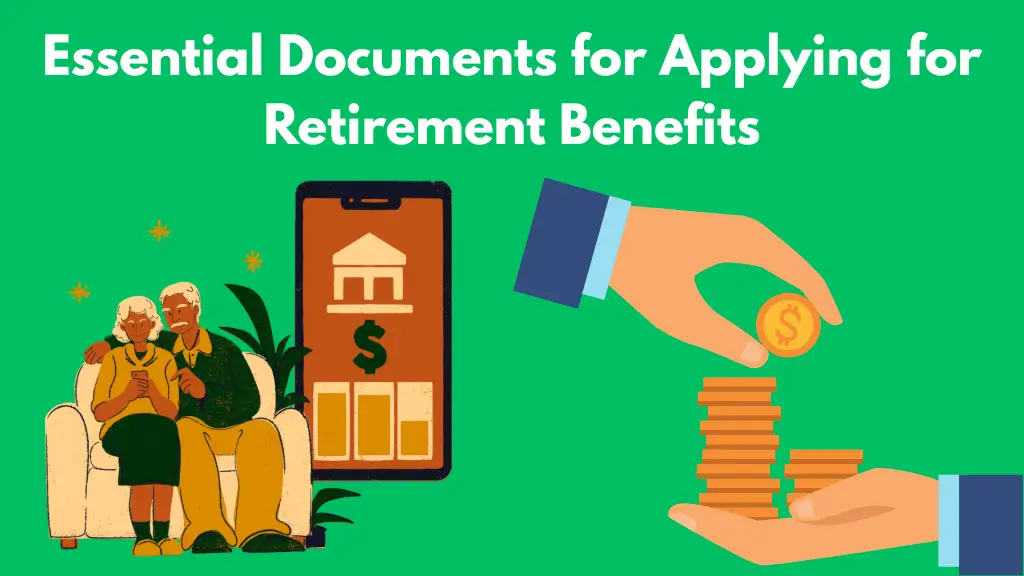Applying for retirement benefits can seem daunting, but being well-prepared with the right documents can make the process smoother and faster. Whether you’re applying for Social Security retirement benefits, Medicare, or other related programs, knowing what to gather ahead of time is crucial. This guide will walk you through the key documents you may need and provide helpful tips for a hassle-free application.

Table of Contents
1. Proof of Identity and Social Security Number
The first step in your application process is verifying your identity. You will need to provide your Social Security card or another official record that confirms your Social Security number. This document is critical as it ties your benefits to your personal record with the Social Security Administration.
Key Points:
- Social Security Card: Always have your original card handy or a certified copy.
- Alternate Records: If you lack the card, other documents showing your Social Security number may be acceptable.
2. Proof of Age: Birth Certificate or Equivalent
To establish eligibility for retirement benefits, proof of age is required. The original birth certificate, or a certified copy from the issuing agency, is the most commonly accepted document. It’s important to note that photocopies or notarized copies are typically not acceptable.
What You Need:
- Original Birth Certificate: If available, use the original document.
- Certified Copy: In case the original is not accessible, ensure you obtain a certified copy from the issuing agency.
3. Citizenship or Legal Residency Documentation
For individuals not born in the United States, proving U.S. citizenship or lawful alien status is mandatory. Again, original documents or certified copies must be provided. Expired documents or mere photocopies will not meet the requirement.
Acceptable Documents:
- U.S. Passport or Certificate of Citizenship
- Immigration Documents: Valid and up-to-date documents demonstrating lawful alien status.
4. Military Service Records
If you served in the U.S. military before 1968, you might be required to submit a copy of your military service papers. Photocopies are generally acceptable in this instance. These records can play a role in determining your benefits or verifying certain aspects of your service.
What to Check:
- Service Papers: Ensure the copies are clear and legible.
- Additional Military Documentation: Have any extra documents related to your service ready, if applicable.
5. Income Verification Documents
Income documentation is essential, particularly if you are self-employed or if your income sources vary. The Social Security Administration may request copies of your W-2 forms or your most recent self-employment tax return. These documents help verify your earnings and determine benefit amounts.
Required Forms:
- W-2 Forms: From your most recent tax year.
- Self-Employment Tax Return: If applicable, provide copies of your filings.
6. Additional Considerations
If you have previously submitted documents for earlier applications—such as a prior Medicare or Social Security claim—you might not need to resubmit the same evidence of age or citizenship. However, it is wise to confirm this with your local Social Security office.
Tips for a Smooth Application:
- Use a Checklist: Utilize available checklists for online applications to ensure you don’t miss any necessary documents.
- Stay Updated: Verify that your documents are current, especially those with expiration dates.
- Local Assistance: Many local Social Security offices offer support and can verify or obtain missing documents by contacting state agencies at no extra cost.
Final Thoughts
Being organized and proactive in gathering your essential documents can make the process of applying for retirement benefits much more straightforward. Whether it’s verifying your identity with your Social Security card, proving your age with a certified birth certificate, or confirming your citizenship, each document plays a pivotal role in ensuring your application is processed without delays.
Remember, even if you’re missing some documents, don’t hesitate to start your application process. You can often provide additional documents later, and local offices are available to help you obtain any necessary information. This proactive approach not only expedites your application but also helps secure the benefits you’re entitled to, ensuring a smoother transition into your retirement years.
By following this guide and staying informed about the requirements, you can confidently navigate the retirement benefits application process and set yourself up for a more secure future.
Read More Article: How to Place a Mortgaged House in a Trust: A Comprehensive Guide for USA Homeowners
As a finance news writer at sirfal.com, I specialize in breaking down complex economic trends, market updates, and investment strategies into clear, actionable insights. My mission is to empower readers with the knowledge needed to make informed financial decisions. Thank you for engaging with my articles; I hope they add value to your financial journey.
This website was… how do I say it? Relevant!! Finally I’ve found something that helped me. Thank you!
This excellent website really has all of the information I wanted about this subject and didn’t know who to ask.